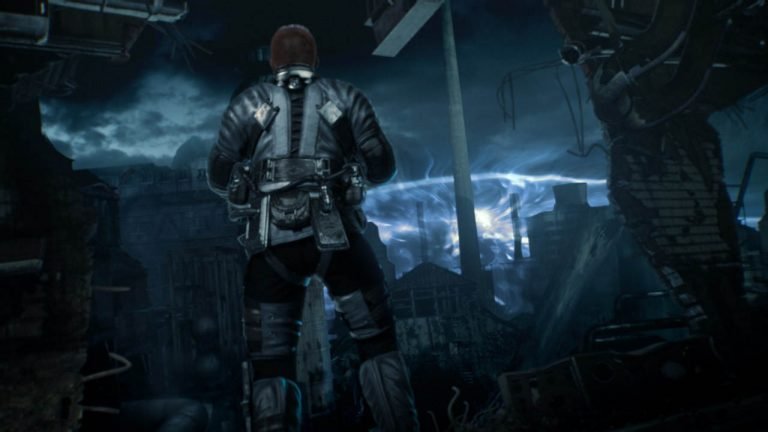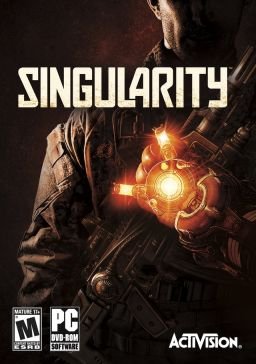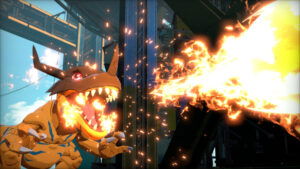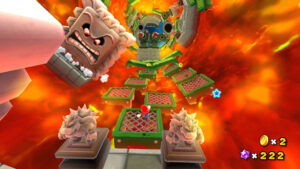Singularity is a shooter bursting with sci-fi promise, but like its crumbling Soviet labs, it starts to decay the longer you look at it.
Singularity is essentially Half-Life lite. It’s a first-person shooter that combines conventional military hardware with abstract futuristic weaponry in a battle against faceless soldiers and nuclear mutants. You take orders from an old scientist and his attractive yet pragmatic sidekick while using a gravity gun to work your way through a series of fading post-apocalyptic environments. In fact, time is all that separates one game from the other.
In Singularity, you play Nate Renko, an American soldier who stumbles through a time warp in an abandoned Soviet research facility and inadvertently saves the life of a Communist dictator in 1955. The resulting fallout leads to a Russian victory in the Cold War, so it’s up to you to go back and restore the world to its original state. The whole endeavour is a massive Back to the Future–style paradox, but it’s easy enough to follow — if you’re willing to swallow a lot of pseudo-scientific gobbledygook.

A wonderful gadget called the Time Manipulation Device ties the story and gameplay together. The TMD isn’t a time machine, so you can’t travel through time at will. You can, however, manipulate the chronological composition of your surroundings, which mainly involves tinkering with objects in various states of decay. Repairing collapsed stairwells and restoring broken machinery are just a few of the possibilities, and it’s all seamlessly integrated into the natural flow of the game. Experimenting with your arsenal is a real treat that only gets better as you spend more time on the battlefield.
The energy-infused rifle that lets you direct bullets in slow motion is just the beginning. Zapping people with the TMD turns them to dust; zapping them twice transforms soldiers into slobbering mutants who rip their comrades to shreds while you munch popcorn from the sidelines. The gravity gun lets you shoot rockets and grenades back at enemies, and gas canisters, propane tanks and liquid nitrogen all make for very serviceable projectiles.
Unfortunately, the practical realities of warfare prevent combat from fulfilling its variable potential. Battles tend to steer you toward using specific weapons, and the mechanics aren’t smooth enough to support dynamic strategies. Switching from a shotgun to the TMD takes several agonizing half-seconds longer than it should, so you’ll take a lot of punishment if you try to get too clever. You’re usually better off unloading whatever gun you’re holding.

The combat is still functional, and you’ll eventually learn to mix and match once you master the timing, but it’s just not as good as it could be — which is an apt summary for the entire game. Singularity sets itself up as a multigenerational sci-fi caper in which you must use the past to change the present. But it never fully materializes.
It’s a shame, because the few moments when you do get to jump through time are some of the best shooter stages in recent memory. Sliding 55 years from a crumbling chamber to a busy break room full of guards creates some unexpectedly exciting set pieces, and there are enough tense moments to make Singularity worthwhile. Raven just doesn’t develop many of the more interesting mechanics. The chrono-light, for example, is forgotten almost as soon as it’s introduced, giving Singularity the incomplete feel of a project that was rushed out the door so the designers could go to lunch.
“This half-hearted design philosophy is reflected in Singularity’s flat difficulty curve.”
The game lasts about eight hours, which is disappointing given the way challenges are scaled for a title twice that length. One puzzle three-quarters of the way through illustrates the issue: you’re trapped in a room with an inaccessible elevator and must carry a brick through a time rift to move forward.

The solution is satisfying, but the blocked portal is an introductory puzzle meant to tease more complex temporal platforming. Unfortunately, it’s the only multidimensional challenge in the entire game. Similar scenarios are equally rudimentary. The complicated situations usually reserved for later chapters never arrive, leaving you wanting more even after you’ve conquered everything Singularity has to offer.
Enemy encounters aren’t much of a threat. Soviet soldiers are wildly incompetent, though some mutants are surprisingly aggressive. Still, health kits are so plentiful your life bar might as well regenerate, and the more dangerous enemies only make brief appearances. One standout fight involves a creature that resurrects fallen monsters — but it’s never repeated, despite not being a boss. Once you realize you need to kill the medic first, it loses much of its challenge.
“Ultimately, Raven deserves credit for introducing some fun innovations to a stagnant first-person genre.”
There are RPG elements, but they’re unremarkable and have little meaningful impact. The same goes for the lacklustre multiplayer, which won’t make anyone forget Call of Duty. That said, Singularity does contain some truly spectacular instances of skull violence. A well-placed sniper shot will cause an enemy’s head to erupt in a spray of bone shards and blood — and it’s awesome every time.
Ultimately, Raven Software deserves credit for introducing some fun innovations to a stagnant genre. A 15-hour version of Singularity, with deeper mechanics and more creative chronological puzzles, could have rivalled Half-Life 2 or BioShock in the pantheon of great sci-fi shooters. As it stands, Singularity is a good game with slightly below-average execution of a slightly above-average idea. The rich material deserves a more ambitious presentation, and this version is too short to warrant anything more than a rental.




